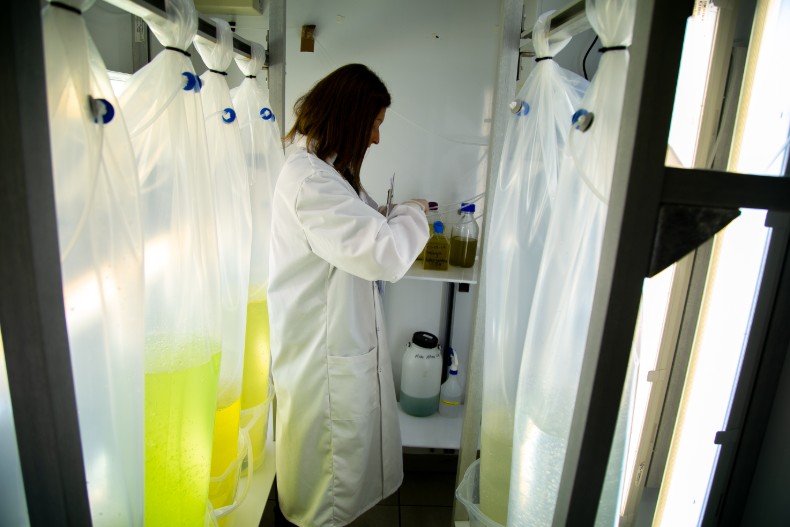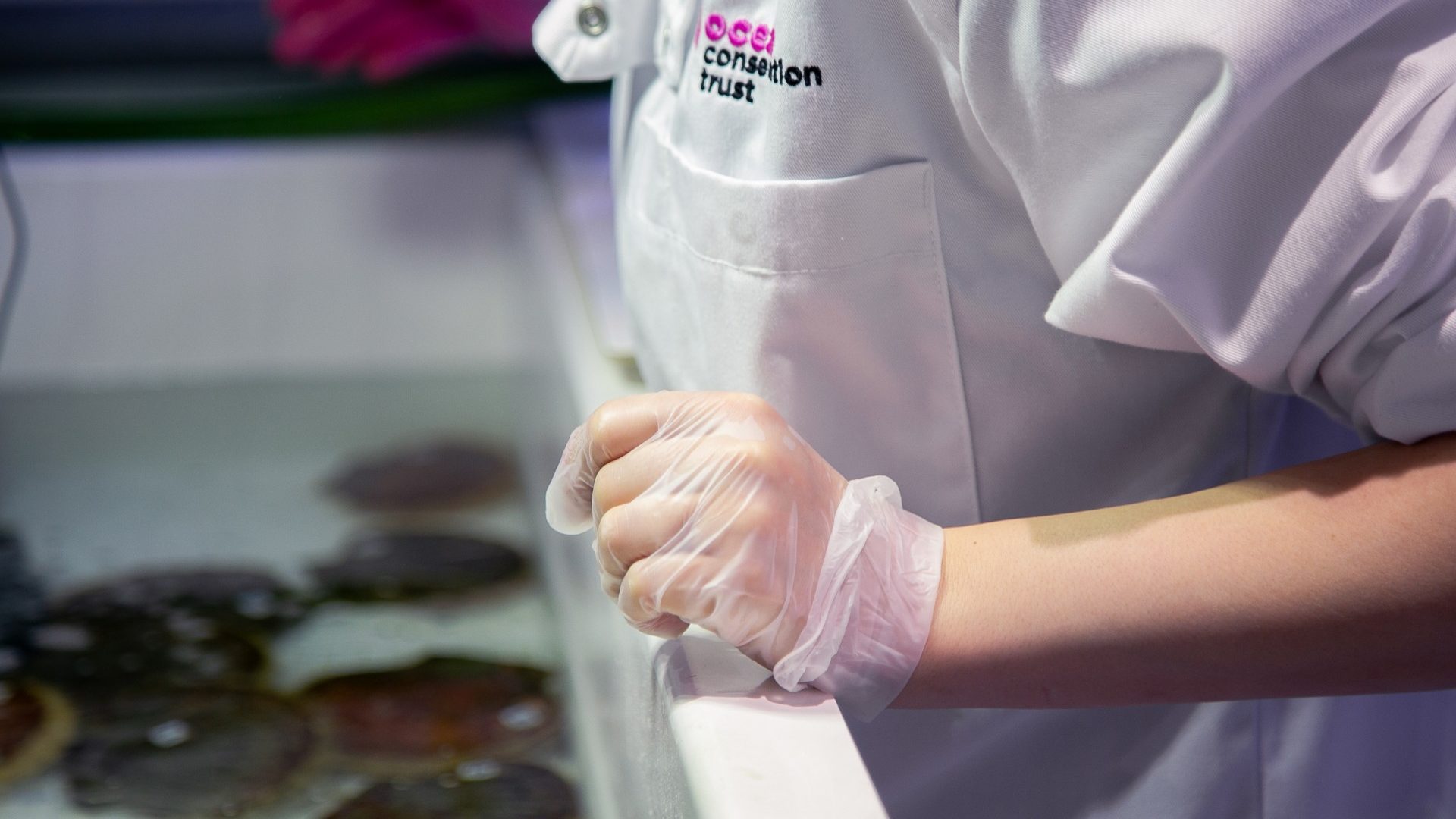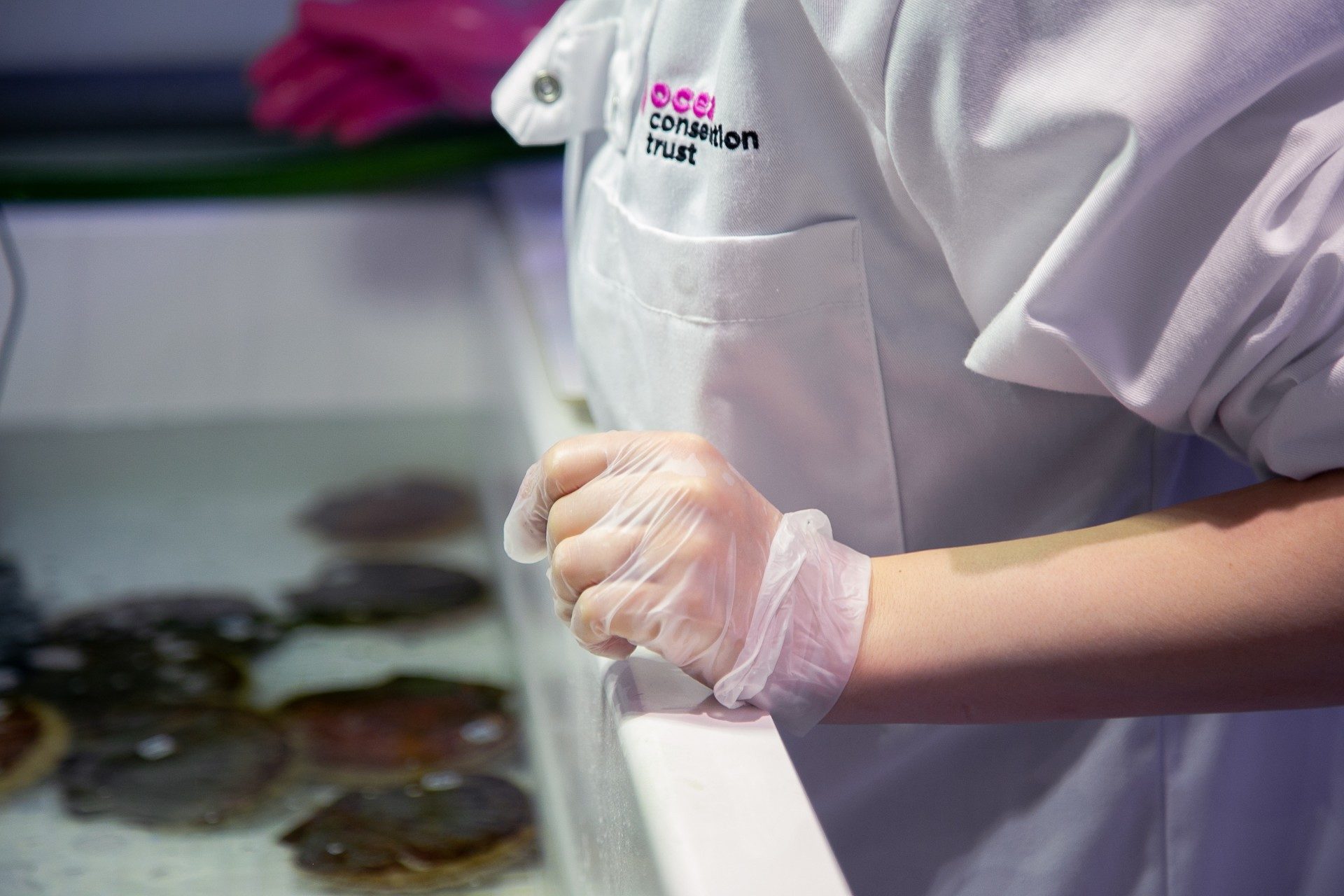
Meet our Scallop Hatchery Technician, Jessica Harvey! She’s working on some exciting projects together with the rest of the team to establish us as the UK’s first sustainable Scallop hatchery. Nine months into her role, she’s looking forward to a future of making continued positive progress in the hatchery and publishing her findings.
Name:
Jessica Harvey
Job Title:
Scallop Hatchery Technician
What did you do before you started working for the Ocean Conservation Trust?
Following the completion of my Sustainable Aquaculture Master’s degree, I went on to work as a laboratory technician at Exeter University. It was here that I gained a lot of fish husbandry, live food culture experience and knowledge of legislation.
What’s a typical day like in your job role?
My primary focus is within the hatchery and algae culture room where each day is different, depending on which stage the Scallops are at in their conditioning regime.
There are, however, some aspects of my job which must be done daily. This includes harvesting the algae, feeding the brood stock and larvae, general aquatic husbandry, water quality testing and ensuring the system is running as it should.
One time-consuming task is counting the algae cells in the culture bags. This allows me to establish how much I need to harvest from the cultures to ensure they get the correct number of cells for their feed. This ranges between 3 billion to 7.5 billion cells, per Scallop, per day!
What’s the most exciting project you are working on currently?
I am very lucky in the sense that my job essentially is a large research project! As we are establishing the UK’s first sustainable Scallop hatchery, one of the current focuses is looking closely at our techniques of larval handing and rearing including feed quantity and species composition. Knowledge of the hatchery culture of the King Scallop is limited so we are learning new things every day!
The algae culture room is also a very exciting part of the Hatchery. The algae cultured not only provides the Scallops with food but also gets fed to the Pink sea fans, Mussels and rotifers in Plymouth Sound.
What’s the most exciting project you have been involve with in the past?
The breeding of the turquoise killifish, Nothobranchius furzeri. It was a lengthy but interesting process including egg incubation, hatching and caring for juveniles!
What qualifications or special skills and experience do you bring to the Ocean Conservation Trust?
I obtained a Bachelor’s Degree in Marine Biology & Coastal Ecology and a Master’s degree in Sustainable Aquaculture Systems at Plymouth University.
Part of my degree allowed an optional placement year in which I spent 6 months living in Malaysia working to successfully culture a range of Giant Clam species that are under threat from both climate and anthropogenic factors. It was here I learnt about the culture process of bivalves, their life cycle and algae culture.
Do you have any projects or activities outside of work that are relevant to your role here? (i.e. volunteering, trustee, own conservation business or group).
I have recently started creating Ocean-inspired illustrations after being taught my partner who is a graphic designer. I use materials such as sea glass and plastics that I collect during beach cleans and leisure walks to enhance them. It’s both therapeutic and helps to clean the beaches!
What are you looking forward to in 2019?
I am looking forward to making positive progress within the hatchery and hopefully publishing some of our findings for others to learn from and expand upon! I am also hoping to get involved with any additional breeding programmes at the Ocean Conservation Trust.
What do you love the most about working for the Ocean Conservation Trust?
I love working for a charity that shares a passion for conserving our Ocean and all things living in it. I also love being in a position where I am able to make a direct impact on a specific shellfish species and contribute to a sustainable future.
What’s your favourite animal at the NMA and why?
Besides the Scallops, it’s definitely the Cownose Rays – they’re incredibly sweet.
What do you love most about the Ocean and why?
I love that in locations such as rockpools, the organisms that live there are hugely diverse but can live alongside each other as a mini ecosystem. Rockpool ecology is particularly fascinating!
What is one thing you think everyone should do to help the Ocean?
Participating in activities such as beach cleans are a great way to get directly involved and make a visible difference to your local coastline. Also, by ensuring you choose sustainable seafood whenever possible is a great way to support sustainable fisheries and reduce our impact on the oceans.


